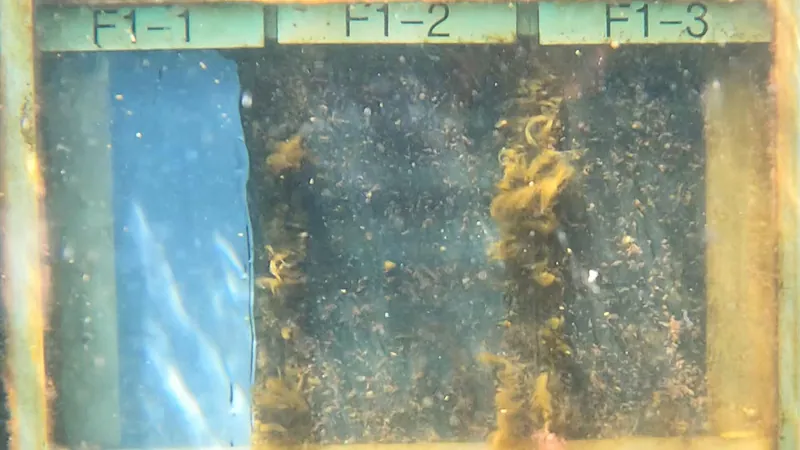
Revolutionary Transparent Coating Keeps Underwater Solar Cells Clean from Algae
2025-06-04
Author: Mei
Innovative Coating Developed by DTU Researchers
In a groundbreaking advancement, researchers at the Technical University of Denmark (DTU) have unveiled a transparent, self-polishing coating designed specifically for underwater drones and solar cell platforms. This remarkable innovation doesn’t just enhance aesthetics; it serves a vital purpose by preventing the accumulation of algae and other forms of biofouling, ensuring the solar cells remain efficient during underwater missions.
A Collaboration of Experts
Led by Professor Søren Kiil, this project was a collaborative effort involving Assistant Professor Narayanan Rajagopalan, Laboratory Manager Claus Erik Weinell, and a dedicated group of students. The coating allows sunlight to penetrate while simultaneously safeguarding the solar cells from being obscured by algae.
A Call to Action from the U.S. Navy
The impetus for this innovation came from the U.S. Navy's Office of Naval Research, which requested creative solutions to improve the functionality of underwater drones used for various marine operations—from seabed surveys to surveillance. In response, Kiil assembled a team and embarked on experimental trials, ultimately demonstrating a coating that remains effective for up to three months without the need for mechanical cleaning.
Harnessing Nanotechnology for Success
The research taps into a wealth of existing maritime knowledge, as anti-fouling coatings are prevalent in commercial shipping. However, the challenge lay in adapting these coatings for solar cells without hindering their light absorption capabilities. Kiil notes that creating a transparent coating while warding off biofouling required careful formulation.
The Self-Cleansing Mechanism Explained
The innovative coating initiates a self-polishing effect upon exposure to seawater, where the outermost layer gradually dissolves and is replaced by new particles that act as a protective barrier. This continuous renewal keeps the solar cells free from obstructions throughout the coating’s lifespan.
A Game-Changer for Underwater Solar Energy
While the U.S. Navy stands to benefit significantly from this technology, its applications extend far beyond military use. The burgeoning field of floating solar energy is set to thrive, with installations anticipated in the North Sea. Currently, floating solar cells boast a global capacity of around 4,000 megawatts, but projections suggest this could soar to 30,000 megawatts by 2030.
Transforming Solar Energy Potential at Sea
As global energy demands evolve, harnessing solar power in marine environments promises to unlock vast potential. Despite the current capacity of underwater and floating solar cells being a fraction of the total solar energy utilized, this technology may pave the way for innovative energy solutions, utilizing oceanic space and integrating seamlessly with offshore wind farms.
With advancements like this transparent coating, the future of underwater solar technology looks brighter than ever.





 Brasil (PT)
Brasil (PT)
 Canada (EN)
Canada (EN)
 Chile (ES)
Chile (ES)
 Česko (CS)
Česko (CS)
 대한민국 (KO)
대한민국 (KO)
 España (ES)
España (ES)
 France (FR)
France (FR)
 Hong Kong (EN)
Hong Kong (EN)
 Italia (IT)
Italia (IT)
 日本 (JA)
日本 (JA)
 Magyarország (HU)
Magyarország (HU)
 Norge (NO)
Norge (NO)
 Polska (PL)
Polska (PL)
 Schweiz (DE)
Schweiz (DE)
 Singapore (EN)
Singapore (EN)
 Sverige (SV)
Sverige (SV)
 Suomi (FI)
Suomi (FI)
 Türkiye (TR)
Türkiye (TR)
 الإمارات العربية المتحدة (AR)
الإمارات العربية المتحدة (AR)